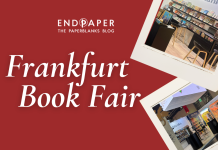
But sometimes the mystery behind a manuscript just won’t reveal itself. We’ve long been fascinated by the infamously indecipherable Voynich Manuscript – a 240-page document from the early 15th century that is often referred to as the “world’s most mysterious book.” Filled with text and diagrams seemingly unrelated to any known language, the manuscript offers a tantalising mystery to anyone interested in language or human history. Over the years, scholars, cryptographers, linguists and everyday avid readers have attempted to decipher the code used to write the manuscript to no avail… until now.

“She made recommendations to the priest, man of the house and me and people.”
According to Canadian computer scientist Greg Kondrak, this is the first complete sentence of the Voynich. And how did he figure this out? With the help of artificial intelligence and computer algorithms.
Using the United Nations Universal Declaration of Human Rights, Kondrak’s team was able to “teach” their computer to identify 380 languages correctly up to 97% of the time. From that knowledge base, they ran the Voynich through the same test and found that the manuscript was written in Hebrew, or a form of it. They determined that the letters within each word had been reordered and the vowels dropped, but the computer was still able to find enough key words to decipher the code.
Thus far Voynich Manuscript experts have been less than receptive to his work, but Kondrak and his supporters believe he and his team are onto something. And while the researchers acknowledge that the computer can only translate, and not add syntax, it certainly seems like a promising start to uncovering the authorshop and meaning behind this mystery manuscript. If you feel up for a challenge and want to take a crack at the code, Wikimedia Commons has all the pages available to view.





Is there a list of all the Embellished Manuscripts since you started doing them?
Hi, thanks for asking! We don’t have one comprehensive list but we did recently published a blog post on 25 authors we have featured on our Embellished Manuscripts which you might find interesting: http://blog.paperblanks.com/2017/06/writing-wednesday-25-authors-weve-featured-on-our-covers-since-1992/
There is a key to cipher the Voynich manuscript. The manuscript was not written in Hebrew.
The key to the cipher manuscript placed in the manuscript. It is placed throughout the text. Part of the key hints is placed on the sheet 14. With her help was able to translate a few dozen words that are completely relevant to the theme sections.
The Voynich manuscript is not written with letters. It is written in signs. Characters replace the letters of the alphabet one of the ancient language. Moreover, in the text there are 2 levels of encryption. I figured out the key by which the first section could read the following words: hemp, wearing hemp; food, food (sheet 20 at the numbering on the Internet); to clean (gut), knowledge, perhaps the desire, to drink, sweet beverage (nectar), maturation (maturity), to consider, to believe (sheet 107); to drink; six; flourishing; increasing; intense; peas; sweet drink, nectar, etc. Is just the short words, 2-3 sign. To translate words with more than 2-3 characters requires knowledge of this ancient language. The fact that some symbols represent two letters. In the end, the word consisting of three characters can fit up to six letters. Three letters are superfluous. In the end, you need six characters to define the semantic word of three letters. Of course, without knowledge of this language make it very difficult even with a dictionary.
If you are interested, I am ready to send more detailed information, including scans of pages showing the translated words.
And most important. In the manuscript there is information about “the Holy Grail”.
Nikolai.
Hi Nikolai,
Thanks for sharing this! There is so much to learn and uncover with the Voynich Manuscript – we appreciate this additional information, and know others will too!
Thanks,
Robyn @ Paperblanks
are here any artifacts known to belong to the author of the voynich code, you should look for cystals , glass bottles, etc of a specific shape. he looked at refraction of light, looking through a clear cystal or bottle full of water changes the shape of what you look at, like letters. etc
How interesting! That could certainly open up some new possibilities.